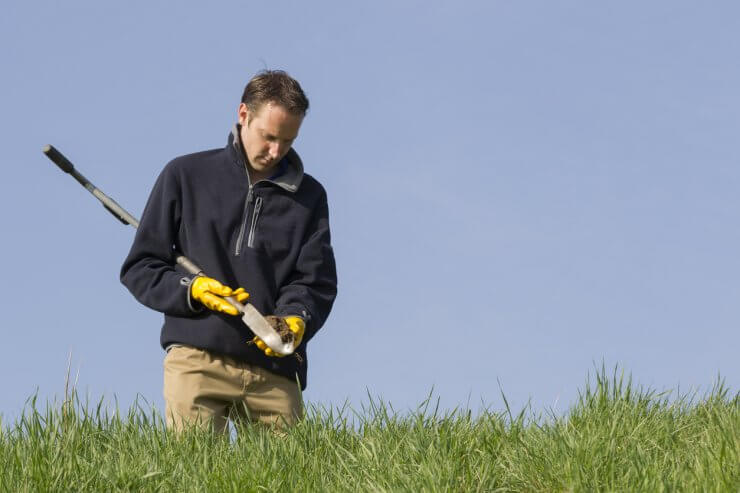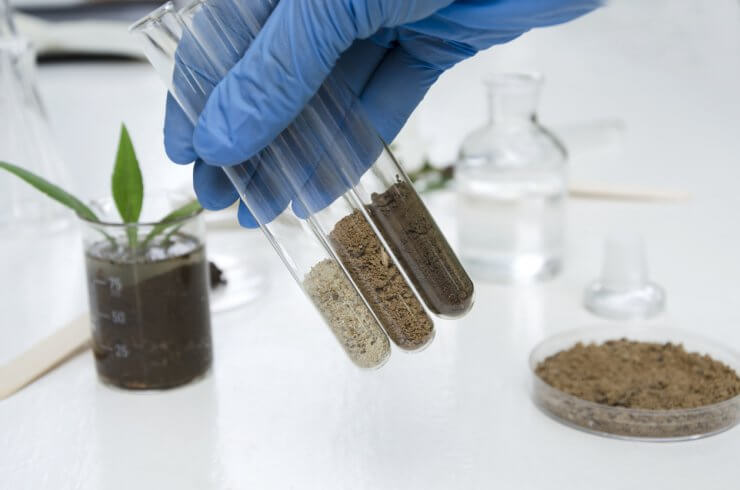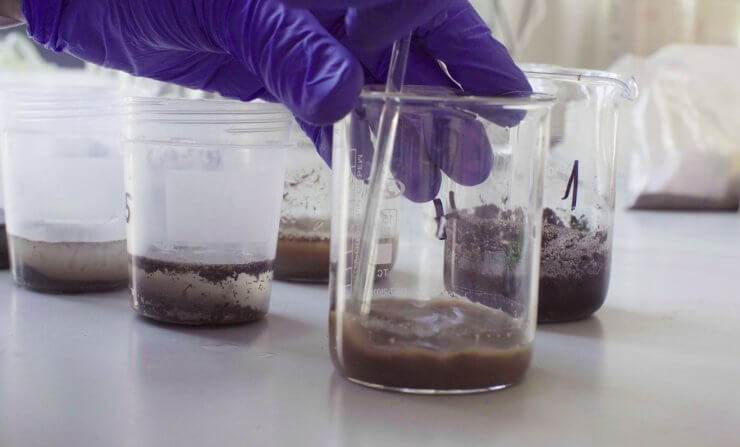
I’ll be the first to admit that when I’m dreaming about a new garden, I don’t put a lot of thought into learning how to test soil quality. Or I didn’t, anyway. I do now. I’m not talking about pH levels or how well the soil drains here. This is about the safety of the soil.
Is it contaminated with old lead paint that chipped off your house? Used oil from someone changing their motor oil in the backyard? Perhaps arsenic from the treated wood on your old deck? Maybe the manure runoff from the farm uphill? Chemical waste from the old factory upriver? Leaky septic system? Pesticides? Or maybe your home is newly built on land that was once an industrial site?
Still not convinced it’s a good idea to learn how to test soil quality? Researchers at Brown University in Rhode Island found that “lead-based paint spread more than 400 feet from nearby water towers, and often penetrated more than 12 inches below the soil surface.”
Discover 7 top tips for growing, harvesting, and enjoying tomatoes from your home garden—when you access the FREE guide The Best Way to Grow Tomatoes, right now!

Ready to find out how to test soil quality in your new garden?
Finding out where or how to test soil quality before you start your garden is important, clearly. The most common way to run a test is to collect the soil yourself and send it to your nearest USDA extension program. The cost for this can vary significantly depending on where you are and what you want to test for. The University of Massachusetts charges between $55 and $70 for each sample, and you’ll need several samples to thoroughly test your soil for toxic metals. At the University of Pennsylvania, it’s up to $165 per sample.
When you collect samples, make a map and record where each soil sample comes from. Remove any surface growth, and with a clean trowel, scoop to a depth of at least 12 inches. Place your soil in the collection container, and carefully mark where each sample comes from. Then send your soil to the lab following their instructions.
That’s all there is to figure out how to test soil quality. But how can you limit your exposure to contaminants if you don’t have options on garden placement?

Gardening options for contaminated soil
If your soil is contaminated and you intend to grow a garden, you still have multiple options.
- Mix your soil with compost to dilute any contaminants (depending on the degree to which the soil is contaminated).
- Set up a raised-bed garden, again, bearing in mind how contaminated your soil is. You can use a landscape cloth at the bottom of your raised bed to prevent vegetable roots from contacting contaminated soil.
- Go with a container garden. It may cost a little more to invest in multiple containers and fresh soil, but you can grow almost anything in a container that you can grow in the ground.
- Join a community garden. Again, there may be an expense to this, but it’s also a great way to meet other gardeners in your neighborhood.
- Hire a professional to remove the soil. This is not always practical, and it is expensive, but it is an option.
Contaminated soil doesn’t have to be the end of your new gardening adventure. But learning how to test soil quality is an essential step in making sure your garden is safe and that the food you harvest from it is as clean as can be.
Have you had to deal with contaminated soil? How did you find out it was contaminated? Discover 7 top tips for growing, harvesting, and enjoying tomatoes from your home garden—when you access the FREE guide The Best Way to Grow Tomatoes, right now!





I have a house in Cumberland, MD, a town with most of the housing stock built in the 1880-1920 range when lead paint was used. I wanted to plant a peach tree but knew that I had alligatoring lead paint on the balconies overlooking the sloping backyard so I had Alban Inspections (Frederick, MD) test the soil. Sure enough, there were high lead levels so I will have to plant my peach tree elsewhere.
Indoor hydroponic garden, very interesting.
What would one require to have an indoor hydroponic garden
I use our hydroponic system over the winter. I use distilled or very pure reverse osmosis water from our well to prevent the minerals from offsetting the fertilizer. Our reverse osmosis system was set up by Culligan, with a whole house pre filter down to about 0.5 micron filtration but does nothing for the hardness.
Make sure your water gets tested though prior to filtering. As far as fertilizers go, there are organic (very heavy) or regular for hydroponics. We live down in So Md, St Mary’s County.